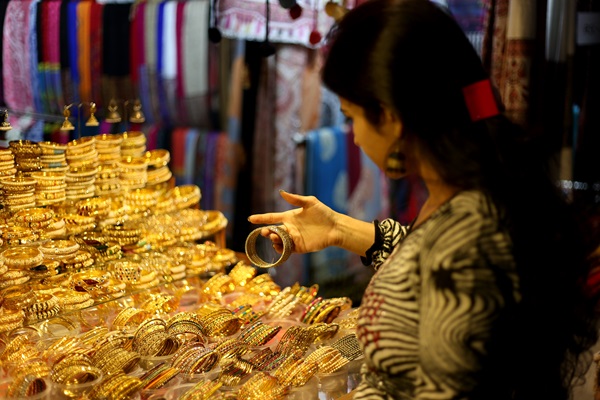.png)

Manoj Rane, who headed treasury at various foreign and domestic banks, was vice chair of FIMMDA and FEDAI. He is now an independent director advising finance firms.
May 2, 2025 at 5:33 AM IST
Gold has always been a polarising asset. To some, it’s a safe haven. To others, it’s a shiny but strategically irrelevant relic. Much of the scepticism around gold stems from a belief in rational policymaking and economic progress. The assumption is that as the world becomes more interdependent, there will be fewer wars, more cooperation, and steady, measured economic decisions. That kind of world doesn’t need gold.
But that world does not exist.
Resilient Returns
Over the past two decades, conflict, volatility, and geopolitical friction have all surged. The Russia-Ukraine war and the Israel-Hamas conflict drag on. Protectionism disrupts global trade flows. Add to that persistent questions around the long-term dominance of the US dollar, and gold begins to look less like an outdated commodity and more like a strategic necessity.
Look at the data. From an Indian perspective, gold has delivered exceptional returns. In March 2005, 10 grams averaged around ₹6,500. Today, it’s around ₹97,300—a 15x jump over 20 years. But what’s even more striking is that a significant part of that gain has come in just one year, with prices surging from ₹60,000 to over ₹97,000. This is not a function of seasonal buying or jewellery demand. This is what the market calls a flight to safety. When the world starts to look fragile, gold steps into the spotlight.
And while equities are often positioned as the superior long-term bet, the numbers tell a more nuanced story. The Sensex has also had a strong run, returning 12.3x over the same 20-year period. Yet gold has outpaced it. Shift the lens slightly to a 19-year horizon and equities take the lead: gold returned 9.8x, the Sensex 11.3x. However, that gap is too narrow. In more recent time frames, one year or even three months, gold has outshone equities.
Currency Cushion
The rupee’s steady decline has also played a role in this outperformance. In 2005, the exchange rate was at 43.50 to a dollar. Today, it is at 84-85. That depreciation alone has boosted gold’s appeal for Indian investors. Adjusting for this, gold has returned about 8.1x over 20 years, while equities have delivered 6.3x. In other words, gold hasn’t just served as a store of value; it has acted as a backdoor hedge against currency weakness.
For Indian investors, gold has indirectly provided dollar exposure without needing to move capital offshore. And unless there is a sudden and dramatic reversal in India’s trade balance or monetary policy, the rupee is likely to remain near current levels, adding further weight to gold’s case.
Of course, gold isn’t without flaws. It can sit flat for years. Its returns come in bursts, and they are usually tied to crises. But that’s the point. It doesn’t compete with growth assets like equities. It complements them. In a well-constructed portfolio, gold provides a cushion, especially when markets are under stress.
The key is not to chase short-term rallies but to build long-term exposure. Systematic investment plans, digital gold, exchange-traded funds, and sovereign gold bonds all offer easy, efficient routes for allocation.
Central banks, too, seem to be reading the signs. Over the last few years, they have steadily increased gold reserves. Over the past five years, the RBI's gold holdings have grown by 35%, rising from 653 tonnes in 2019-20 to 880 tonnes by March 2025. This trend reflects a quiet but telling shift: a desire to diversify away from US dollar-dependence and insulate reserves from geopolitical shocks.
This isn’t to suggest that gold should dominate portfolios. But it does underline the need for balance. Gold’s 5-15% allocation, adjusting for risk appetite, hedges against tail risks without sacrificing equity upside. The World Gold Council’s analysis shows portfolios with 10% gold reduced volatility by 15-20% over three decades.
Gold doesn’t glitter every year. But when the rest of the world frays at the edges, it quietly does what it has always done—hold its ground. For Indian investors, it uniquely addresses currency fragility and systemic shocks. The numbers, stripped of bias, speak plainly: in a fractured world, gold isn’t just tradition. It’s strategy.




